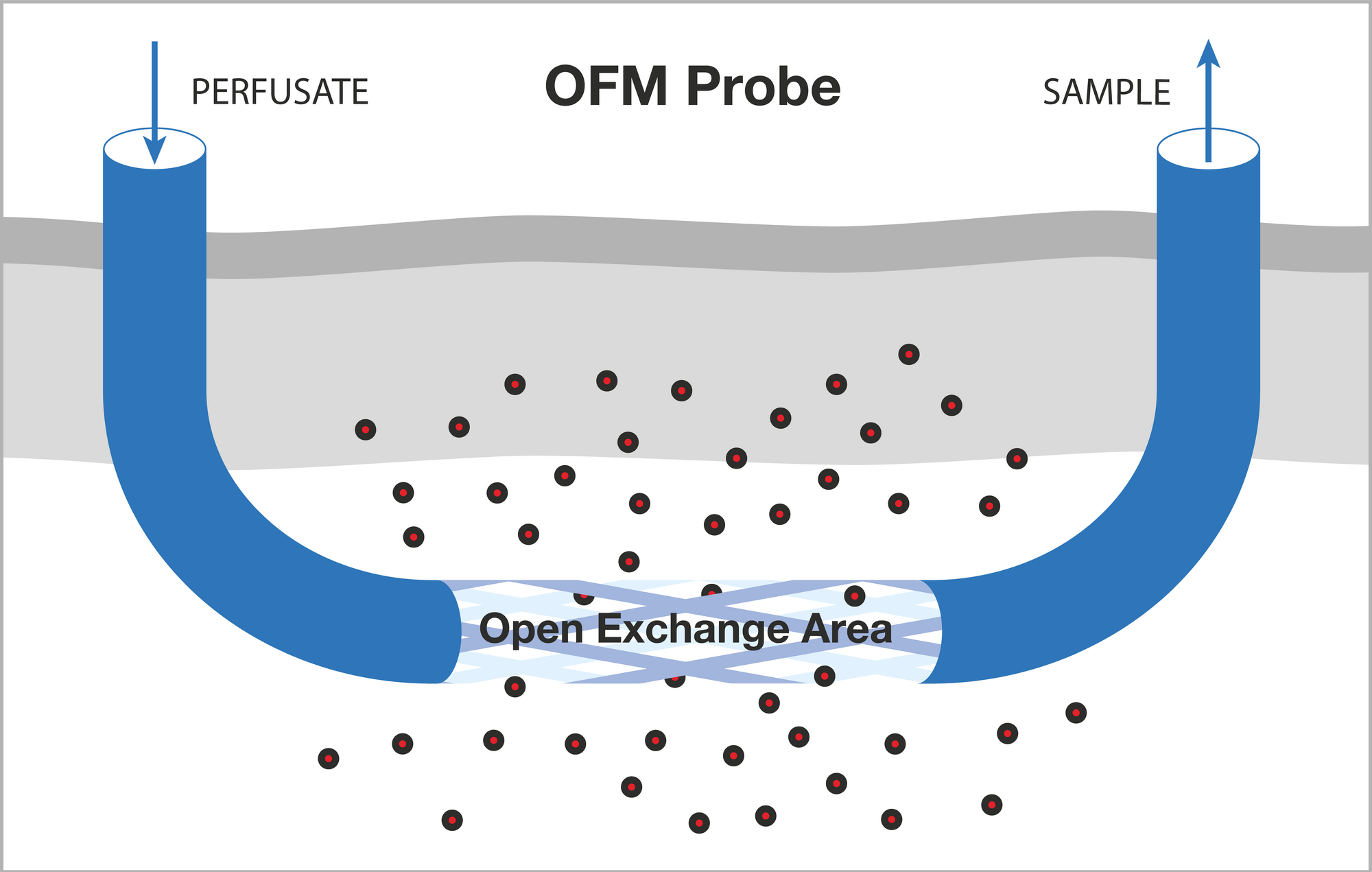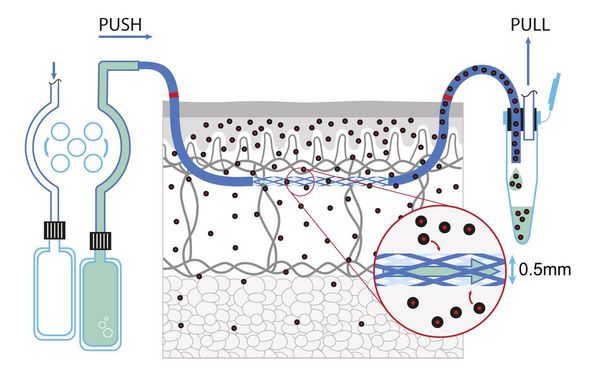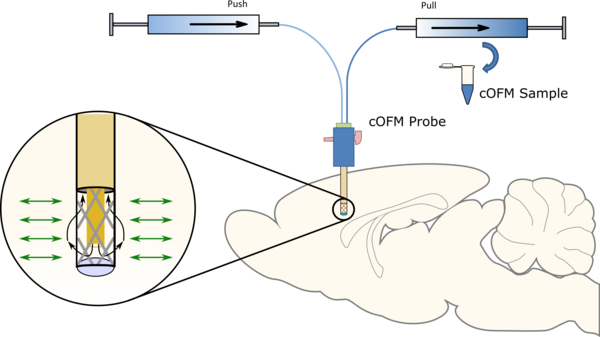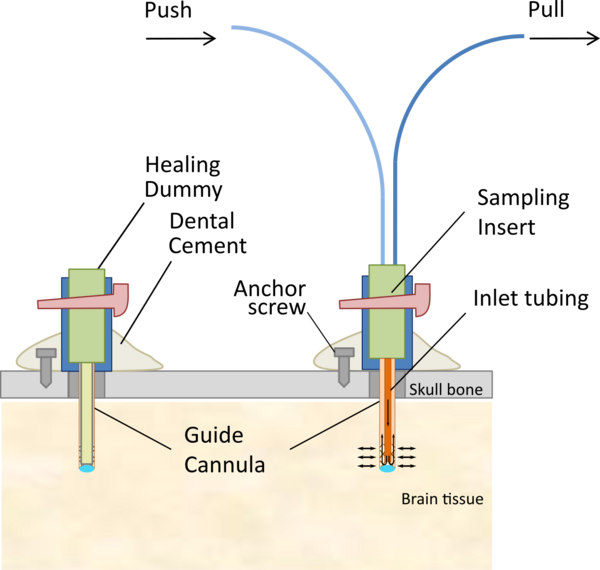OFM uses probes with macroscopic openings to exchange substances in a liquid pathway that is based on convection and diffusion so that the exchange can occur non-selectively in either direction.
The direct liquid pathway between the probe’s perfusate and the surrounding interstitial fluid (ISF) provides a diluted but otherwise unchanged ISF sample, since no dialysis or filtering occurs. OFM provides unfiltered, merely diluted interstitial fluid from the investigated target tissues (skin, adipose, brain tissue). Endogenous and exogenous substances present in the interstitial fluid of targeted tissues can thus be quantified without the risk of investigating an altered sample.
Working Principle
OFM probes are perfused with a physiological solution (perfusate) which equilibrates with the interstitial fluid (ISF) of the surrounding tissue. Operating flow rates range from 0.1 to 10 μL/min. OFM allows unrestricted exchange of compounds Via the open exchange are of the probe. This exchange of compounds between the probe’s perfusate and the surrounding ISF is driven by convection and diffusion, and occurs non-selectively in either direction.
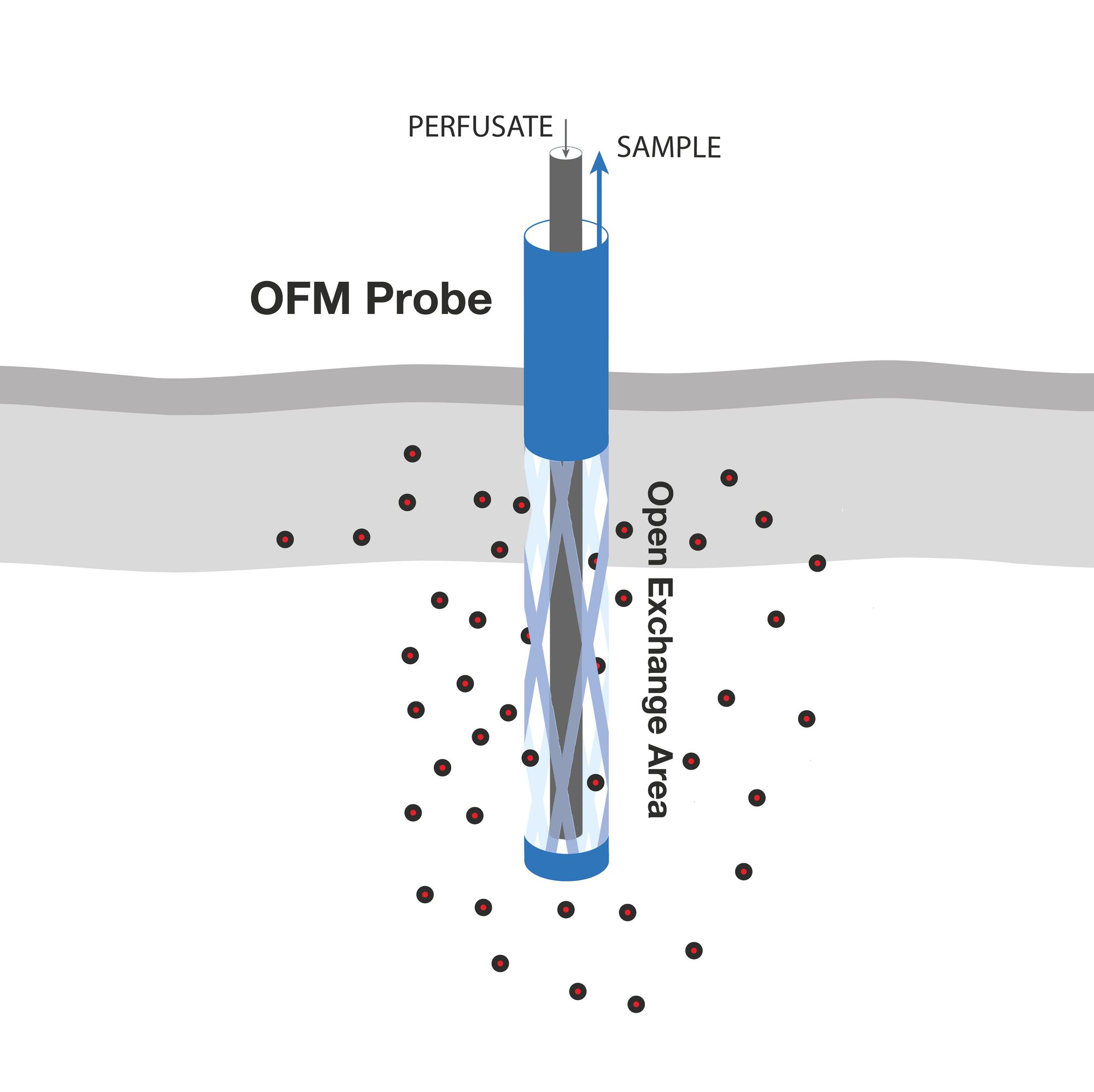
The concentric OFM probe
The concentric OFM probe (left) works according to the same principle as the linear probe. The perfusate is pumped through the inner, thin tubing to the tip of the OFM probe where it exits and mixes with the ISF. The mixture (OFM sample) is collected through the outer, thick tubing.
Materials and Methods
dOFM/aOFM
Study materials
- CE-marked probes, pumps and accessories for preclinical and clinical studies
- minimally invasive, membrane-free probes (fluoropolymer) with a 0.55 x 15 mm exchange area
- portable pump (0.1-10 µl/min) with delta push-pull modes
- 3 OFM probes per pump
Complementary methods
- ultrasound to verify probe location and measure dermal thickness
- tape stripping
- skin biopsies and suction blister
- TEWL (transepidermal water loss)
- skin impedance
cOFM
Study materials
- cOFM material available for preclinical use only
- minimally invasive, membrane-free probes (PEEK) with 0.5 mm diameter
- high precision stereotactic implantation
- removable healing dummy allows tissue regeneration and BBB integrity re-establishment after probe implantation
